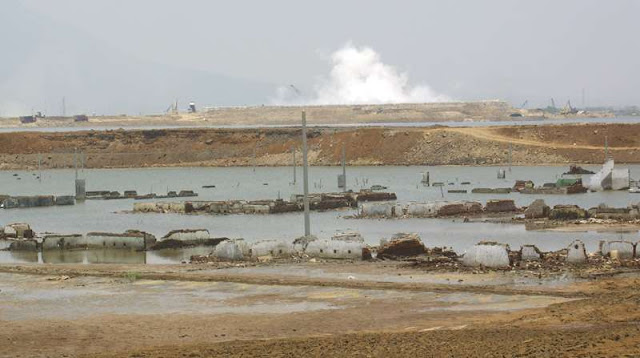In May 2006, an underground mud volcano erupted in the East Java province of Indonesia, displacing more than 40,000 people as boiling hot mud swept into their fields and villages.
The Lapindo mudflow became one of Indonesia’s most controversial disasters as a gas exploration company and the Indonesian government debated for years over whether drilling or an earthquake hundreds of kilometers away caused the volcano to overflow.
Meanwhile, thousands of people whose homes and property were destroyed were left in limbo without compensation as this episode of scientific contention played out, said Phillip Drake, University of Kansas assistant professor of English, who studies the intersection of science and rhetoric surrounding environmental disasters.
“It was interesting to learn more about people who were trying to survive in the face of political, economic and social uncertainty without access to some of the tools or support systems that we take for granted here,” said Drake, author of the article “Multiple visions of Indonesia’s mud volcano: Understanding representations of disaster across discursive settings,” which was recently published online in the journal Disasters.
The “trigger debate” of the Lapindo mudflow centered around whether the cause was human error—the unsafe drilling in a gas exploration mine 150 meters from the center of the mudflow—or natural forces—a massive earthquake two days earlier in Yogyakarta about 200 kilometers away. The debate would decide fault and determine who would coverage monetary damages and likely bear the brunt of legal retribution.
The drilling company, Lapindo Brantas, and the government together presented sets of geological experts that interpreted the data in ways that support the company’s interests and differ from interpretations by most international experts.
“One major factor precluding scientific consensus is the influence of stakeholders who are—or at least perceived to be—mobilizing contested science to promote or protect their interests,” Drake said.
The trigger debate over the Lapindo mudflow is important on a broader level, Drake said, especially regarding issues related to global warming and as the use of hydraulic fracturing spreads through the United States and the world, which has forced questions to arise about the contested representations of energy science, pollution, companies, activists and residents.
He said it is important to focus on the human element of disaster and think beyond nature as the primary cause of disaster.
“It’s easy to naturalize it, and once you naturalize it and blame it on nature, the automobile industry is off the hook. Coal mines are off the hook. You have companies involved in deforestation that are off the hook as well,” Drake said. “It’s a useful way to blame nature to mask environmental atrocities that are occurring.”
Oftentimes as well, disasters emerge through “slow violence,” as human decisions and relationships contribute to environmental conditions that can cause a disaster. Frequently, such a disaster disproportionately affects poor people who live close to hazards, like a coast in a seismically active region, a volcano or a nuclear power plant, he said.
“I would like people to think about disasters as not necessarily a single moment or a single event that occurs with a very distinct beginning and end, but it’s something that is always unfolding in time,” Drake said. “We are currently living and creating the conditions under which disaster will be felt or experienced in the future.”
Changing how we approach resolving conflicts about the cause of disasters and how victims are configured could have wide applications behind Indonesia, Drake said.
“This analytical expansion,” he said, “would involve the observation of broader historical, political, economic, cultural and geological factors.”
Reference:
Phillip Drake. Multiple visions of Indonesia’s mud volcano: understanding representations of disaster across discursive settings, Disasters (2015). DOI: 10.1111/disa.12145
Note: The above post is reprinted from materials provided by University of Kansas.










